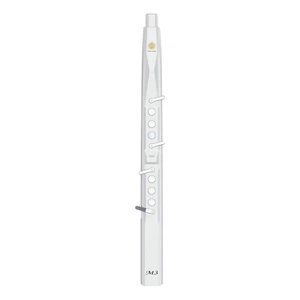Playing the Hulusi flute, a traditional Chinese wind instrument, involves a few essential techniques and steps:
Understanding the Instrument Structure:
The Hulusi is composed of a gourd serving as the resonator and several bamboo pipes. The main pipe has finger holes for producing different notes, while the side pipes emit continuous bass notes that provide a harmonic background.
Holding the Hulusi:
Hold the Hulusi with a relaxed grip, ensuring your fingers naturally curve over the finger holes. The fingers should not be too tense or too loose to allow for flexibility and speed in playing.
Breathing Techniques:
Breathe deeply, taking in as much air as possible. Control the exhalation to ensure a steady and even airflow. The force of the breath will vary depending on the pitch being played; more force for lower notes and less for higher notes 280.
Finger Placement and Movement:
Use the pads of your fingers to cover and uncover the holes. When pressing down on the holes, ensure a tight seal to prevent air leaks that can affect the sound quality and pitch. When lifting fingers to produce different notes, avoid lifting them too high, which can hinder speed and flexibility.
Embouchure:
The mouth position is crucial for producing a good sound. The lips should be positioned around the blowing hole without causing the cheeks to bulge, and the breath should be controlled to produce a steady tone.
Basic Techniques:
Basic techniques include "Tu" (a quick, staccato note), "Ku" (a longer, more connected note), and "Fu" (a smooth, gliding transition between notes). These techniques are essential for articulating music on the Hulusi.
Practice Scales and Melodies:
Start by practicing scales and simple melodies to familiarize yourself with the fingerings and the instrument's response to breath control 280.
Advanced Techniques:
As you progress, learn advanced techniques such as trills, vibrato, and other expressive elements that can add depth and emotion to your playing.
Maintenance:
Regularly clean the mouthpiece and keep the instrument dry to maintain its condition and sound quality.
Listening and Adjustment:
Listen to recordings of skilled Hulusi players to understand the instrument's capabilities and adjust your technique accordingly.
Remember, practice is key to mastering the Hulusi flute. Start with basic techniques and gradually move on to more complex pieces as you become more comfortable with the instrument.
SUNRISE MELODY Electric hulusi flute instrument
Chinese hulusi flute instrument it has a unique ethnic style and is extremely ethnic.
The Chinese Hulusi Flute Instrument is a distinctive and charming musical instrument. It originated from ethnic minorities in China, mainly in Yunnan Province.
The Hulusi is made of a gourd and bamboo pipes. Its unique structure gives it a gentle and mellow sound. The instrument typically has several holes on the pipes, allowing players to produce different pitches.
The Hulusi is often used to play folk music, expressing the emotions and stories of local people. Its melodies are usually simple yet beautiful, carrying a rich cultural heritage.
Playing the Hulusi requires specific breathing and fingering techniques. Mastery of these techniques enables players to create captivating music.
In modern times, the Hulusi has gained popularity beyond its original regions, becoming a beloved instrument for many music lovers.



